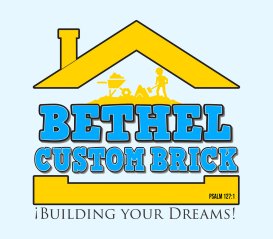A masonry chimney is a durable and functional feature of your home, but years of exposure to harsh weather, water infiltration, and natural wear can lead to significant structural damage. When repairs are no longer sufficient, a full chimney rebuild may be necessary to restore safety, functionality, and aesthetics. Understanding the rebuilding process can help you prepare for this essential home improvement project. Here’s a guide to what you can expect when your masonry chimney is rebuilt.
Signs You May Need a Chimney Rebuild
Before diving into the process, it’s important to recognize the signs that indicate your chimney may require a rebuild:
- 1. Extensive Cracking or Spalling: Large cracks, flaking bricks, or crumbling mortar compromise the structure’s integrity.
- 2. Leaning Chimney: A chimney that is tilting or leaning is a serious safety hazard that often requires rebuilding.
- 3. Severe Water Damage: Persistent leaks, mold growth, or efflorescence (white residue) on the chimney indicate moisture problems that may necessitate a rebuild.
- 4. Damaged Chimney Crown: If the crown is extensively cracked or missing, water can infiltrate the structure and weaken it over time.
- 5. Age and Wear: Older chimneys with widespread deterioration may not be repairable and need to be replaced for safety and performance.
If your chimney exhibits any of these issues, a professional inspection can confirm whether a rebuild is the best solution.
The Masonry Chimney Rebuilding Process
1. Initial Inspection and Planning
Rebuilding a masonry chimney involves carefully dismantling and reconstructing the structure to ensure stability, safety, and a polished appearance. Here’s what you can expect:
What Happens:
A professional mason inspects the chimney to assess the extent of damage and determine the scope of the rebuild.
Key Considerations:
• Structural integrity of the existing foundation.
• Replacement of damaged materials.
• Ensuring compliance with local building codes.
Why It’s Important:
A thorough inspection ensures that the rebuild addresses all issues and creates a long-lasting chimney.
2. Dismantling the Damaged Chimney
What Happens:
The damaged sections of the chimney are carefully dismantled, brick by brick, to preserve any reusable materials.
Tools Used:
Specialized masonry tools are employed to remove bricks and mortar without damaging surrounding structures.
Why It’s Important:
Proper removal prevents further damage to your home and ensures a clean slate for reconstruction.
3. Foundation Assessment and Repairs
What Happens:
The chimney foundation is inspected for cracks, erosion, or instability. If needed, repairs or reinforcements are made to ensure a stable base.
Why It’s Important:
A strong foundation is essential for supporting the weight of the rebuilt chimney and preventing future issues.
4. Rebuilding the Chimney
What Happens:
- New bricks and mortar are used to reconstruct the chimney from the ground up.
- Special attention is given to matching the original design, color, and texture of the materials for a seamless look.
Techniques:
- Laying bricks with precise alignment.
- Ensuring proper mortar joints for strength and durability.
Why It’s Important:
Quality craftsmanship ensures the rebuilt chimney is both functional and visually appealing.
5. Installing or Repairing Chimney Components
What Happens:
- A new chimney crown is constructed to protect the structure from water infiltration.
- Flashing is installed or repaired to create a watertight seal between the chimney and the roof.
Techniques:
- Laying bricks with precise alignment.
- Ensuring proper mortar joints for strength and durability.
- Optional additions like a chimney cap or liner are installed for added protection and safety.
Why It’s Important:
These components prevent future damage and improve the chimney’s performance.
6. Cleanup and Final Inspection
What Happens:
- The work area is thoroughly cleaned, and debris is removed.
- The rebuilt chimney is inspected to ensure it meets safety and building code standards.
Why It’s Important:
A final inspection guarantees the rebuild was successful and the chimney is ready for use.
Benefits of a Masonry Chimney Rebuild
Investing in a chimney rebuild offers several advantages:
- 1. Enhanced Safety: A rebuilt chimney eliminates structural hazards, ensuring it’s safe for use.
- 2. Improved Efficiency: A properly constructed chimney improves ventilation and reduces energy waste.
- 3. Increased Longevity: New materials and modern techniques extend the life of your chimney for decades.
- 4. Restored Aesthetics: A rebuilt chimney enhances your home’s curb appeal and preserves its architectural charm.
- 5. Preventative Protection: Reinforced structures and water-resistant features protect against future damage.
Tips for Maintaining Your Rebuilt Chimney
After your chimney has been rebuilt, regular maintenance is crucial to keep it in excellent condition:
- Annual Inspections: Schedule yearly chimney inspections to catch small issues early.
- Waterproofing: Apply a breathable waterproof sealant to protect the masonry from moisture.
- Chimney Cleaning: Remove soot, debris, and creosote buildup to ensure proper airflow and reduce fire risks.
- Check the Crown and Flashing: Regularly inspect these areas for signs of wear or damage.
Bethel Custom Brick – Expert Masonry Chimney Rebuilding in the Detroit Metro Area
At Bethel Custom Brick, we specialize in expertly rebuilding masonry chimneys to restore safety, functionality, and beauty. Serving the Detroit Metro area, our skilled team handles every step of the process with precision, from dismantling and foundation repair to crafting a new, durable chimney. Contact us today to schedule a consultation and let us bring your chimney back to its best.


